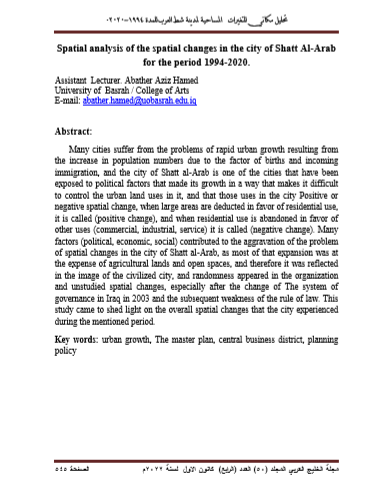Spatial analysis of the spatial changes in the city of Shatt Al-Arab for the period 1994-2020.
Keywords:
urban growth, The master plan, central business district, planning policyAbstract
Many cities suffer from the problems of rapid urban growth resulting from the increase in population numbers due to the factor of births and incoming immigration, and the city of Shatt al-Arab is one of the cities that have been exposed to political factors that made its growth in a way that makes it difficult to control the urban land uses in it, and that those uses in the city Positive or negative spatial change, when large areas are deducted in favor of residential use, it is called (positive change), and when residential use is abandoned in favor of other uses (commercial, industrial, service) it is called (negative change). Many factors (political, economic, social) contributed to the aggravation of the problem of spatial changes in the city of Shatt al-Arab, as most of that expansion was at the expense of agricultural lands and open spaces, and therefore it was reflected in the image of the civilized city, and randomness appeared in the organization and unstudied spatial changes, especially after the change of The system of governance in Iraq in 2003 and the subsequent weakness of the rule of law. This study came to shed light on the overall spatial changes that the city experienced during the mentioned period.




